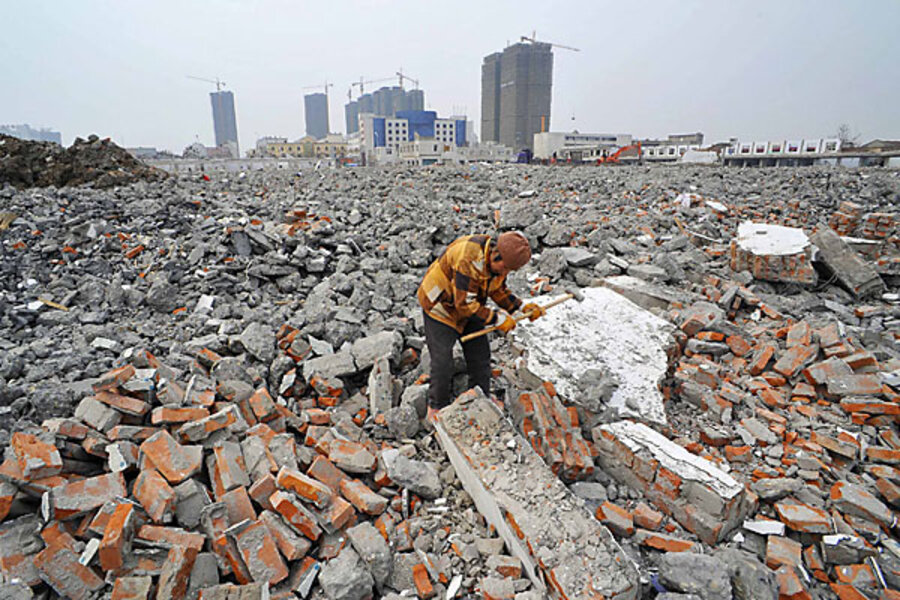Watch out for a hard landing in China
Loading...
When someone expresses awe and admiration for China's economic miracle, I'm reminded of Japan in the late 1980s. Back then, many Americans believed they'd soon be run out of business by Japanese firms or end up working for them.
Instead, Japan's stock and real estate bubbles collapsed. Japan entered a deflationary depression that continues today and keeps it stuck as a perpetual also-ran, no longer a threat to America's economic primacy.
Despite all the hype, today's Chinese threat is even more remote. In 2010, China's gross domestic product – its output of goods and services – was $5.9 trillion, just 40 percent of the United States' $14.7 trillion GDP. It's true that the Chinese economy is growing rapidly, but it needs consistently high growth rates just to absorb all the people moving to the cities in search of jobs.
And with US consumers retrenching, China's export-led economy is due for a hard landing. Instead of 9.8 percent, its growth in the fourth quarter of 2010, China's GDP could decline toward a recessionary 6 percent. That will slow domestic job growth, choke off the expansion in the rest of Asia, and rattle investors around the world.
It also will no doubt burst the global commodity bubble, which would be bad news for commodity exporters, ranging from Brazil and Canada to Australia and New Zealand.
A hard landing in China is very likely for two reasons. For one, Beijing's policy tools are crude. In the wake of a real estate bubble, a jump in consumer inflation from negative territory in 2009 to 4.9 percent in January 2011, and a rise in food prices to a politically untenable 10.3 percent, China has slammed on the brakes. Eight times since January 2010, the central bank has raised reserve requirements – a sledgehammer tool the Federal Reserve here hasn't used in decades.
Another reason for a hard landing: In a part command/part market-driven economy like China's, any economic policy is hard to enact. For example: Chinese leaders know they need to shift economic emphasis to the home front and away from exports, but it's not as though they can flip a switch. China's middle class, about 10 percent of the population by my calculations, is small.
Furthermore, consumers there save almost 30 percent of their income, which means that consumer spending is a tiny 34 percent of China's GDP, less than half the US level of 70 percent. It will take years to boost individual incomes, provide the social safety net that will discourage high saving, and create a domestic engine of growth.
All this leaves China's economy dependent on exports at a time when it also faces major excess industrial capacity problems, which portend weak profits and trouble for years. In my judgment, most of that excess capacity will, as usual, be used for exports that will add to global excess supply and to downward pressure on prices.
China and other export-dependent emerging economies will compete fiercely in a world of slow growth and deflation for limited import demand by developed lands. Meanwhile, Beijing is reluctantly succumbing to pressures to give up its one trump card: its tight control of its yuan currency, which has so far insulated the economy from losing export share.
None of this suggests that the long-run growth story for China is wrong. It's just that its stop-go economic policy will keep the ride volatile, and that current enthusiasm for the Middle Kingdom is way overdone.
•A. Gary Shilling, president of a Springfield, N.J., investment firm, is author of a new book "The Age of Deleveraging."





